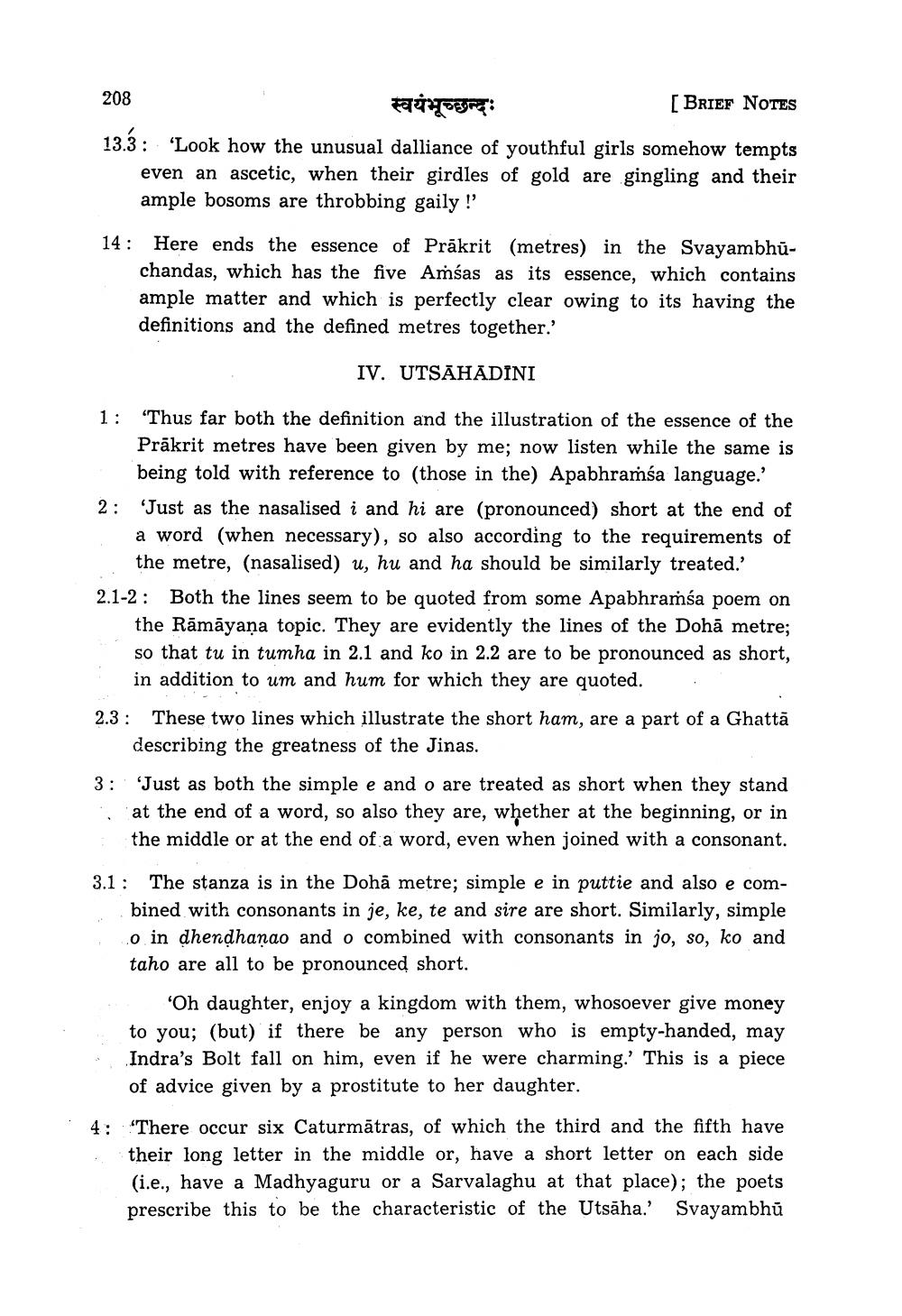________________
208
स्वयंभूच्छन्दः
[BRIEF NOTES : 'Look how the unusual dalliance of youthful girls somehow tempts even an ascetic, when their girdles of gold are gingling and their ample bosoms are throbbing gaily!
14: Here ends the essence of Prākrit (metres) in the Svayambhū
chandas, which has the five Ambas as its essence, which contains ample matter and which is perfectly clear owing to its having the definitions and the defined metres together.'
IV. UTSAHADINI
1: "Thus far both the definition and the illustration of the essence of the
Prākrit metres have been given by me; now listen while the same is
being told with reference to those in the) Apabhramśa language.' 2: "Just as the nasalised i and hi are (pronounced) short at the end of
a word (when necessary), so also according to the requirements of
the metre, (nasalised) u, hu and ha should be similarly treated.' 2.1-2: Both the lines seem to be quoted from some Apabhramsa poem on
the Rāmāyana topic. They are evidently the lines of the Dohā metre; so that tu in tumha in 2.1 and ko in 2.2 are to be pronounced as short,
in addition to um and hum for which they are quoted. 2.3: These two lines which illustrate the short ham, are a part of a Ghattā
describing the greatness of the Jinas. 3: 'Just as both the simple e and o are treated as short when they stand
at the end of a word, so also they are, whether at the beginning, or in the middle or at the end of a word, even when joined with a consonant.
3.1 : The stanza is in the Dohā metre; simple e in puttie and also e com
bined with consonants in je, ke, te and sire are short. Similarly, simple o in dhendhanao and o combined with consonants in jo, so, ko and taho are all to be pronounced short.
"Oh daughter, enjoy a kingdom with them, whosoever give money to you; (but) if there be any person who is empty-handed, may Indra's Bolt fall on him, even if he were charming.' This is a piece of advice given by a prostitute to her daughter.
There occur six Caturmātras, of which the third and the fifth have their long letter in the middle or, have a short letter on each side (i.e., have a Madhyaguru or a Sarvalaghu at that place); the poets prescribe this to be the characteristic of the Utsäha.' Svayambhū
4:




